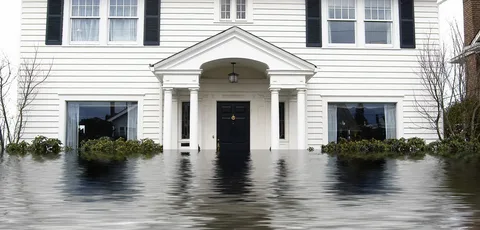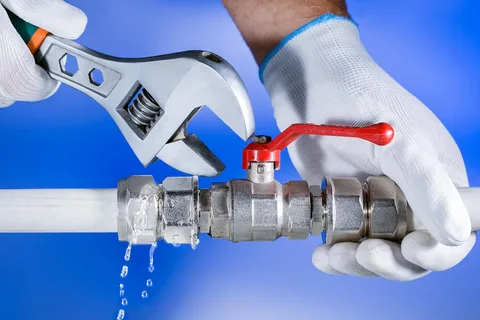Key Takeaways:
- Flood damage in Kansas City can lead to significant structural damage, financial strain, and health risks for residents.
- Seeking the assistance of professional flood restoration services is crucial to efficiently and effectively restore the property.
- The flood restoration process involves assessment, water extraction, structural drying, cleaning, and sanitization.
- Preventive measures such as regular maintenance and effective flood preparedness can help mitigate the risk of flood damage.
Understanding the Impact of Flood Damage
Flood damage can have devastating effects on homeowners in Kansas City. When a flood occurs, it can lead to significant structural damage, disrupting the lives of residents and causing financial strain. The force of the water can weaken foundations, compromise the integrity of walls and floors, and destroy valuable possessions.
Furthermore, the long-term consequences of flood damage on property can be extensive. Mold growth is a common problem after a flood, as the excess moisture creates an ideal environment for mold to thrive. This can lead to health issues for residents and further damage to the property.
In addition to property damage, floods can also pose serious health and safety risks to residents. The floodwater may contain harmful contaminants, such as sewage, chemicals, and bacteria, which can pose a threat to human health. The physical hazards during a flood, such as fast-moving water and debris, can also result in injuries or even fatalities.
The Importance of Professional Flood Restoration Services
When faced with flood damage in Kansas City, it is crucial to seek the assistance of professional service for flood restoration, Kansas City. These companies have the expertise and equipment necessary to handle the complexities of flood restoration.
Professional flood restoration companies have experienced technicians who are trained in assessing and mitigating flood damage. They understand the intricacies of water damage restoration and can effectively navigate the restoration process.
By hiring professionals, homeowners can benefit from efficient and effective restoration. These experts have access to advanced tools and equipment that aid in the extraction of water, drying of structures, and cleaning of affected areas. They can quickly and comprehensively restore the property to its pre-flood condition.
Additionally, professional restoration services can help prevent further damage or mold growth. Prompt action is essential after a flood to minimize the impact on the property. Professionals can identify hidden areas of moisture, properly dry the affected spaces, and apply treatments to inhibit mold growth.
The Step-by-Step Process of Flood Restoration
The flood restoration process involves several crucial steps to ensure a thorough and successful restoration. Understanding these steps can help homeowners in Kansas City navigate the process and better comprehend the efforts involved in restoring their property.
- Assessment and Documentation of Flood Damage
The first step in flood restoration is assessing the extent of the damage. Professionals will thoroughly inspect the property, documenting the affected areas and creating a detailed damage assessment report. This assessment helps in developing a tailored restoration plan and estimating the necessary repairs and costs.
- Water Extraction and Removal to Ensure Structural Drying
Once the assessment is complete, the next step is to extract the water from the property. Professionals use powerful pumps and specialized equipment to remove standing water swiftly. This step is crucial to prevent further damage to the structure and to facilitate the drying process.
After the water extraction, professionals employ dehumidifiers and air movers to dry out the affected areas. They monitor the moisture levels to ensure complete structural drying, preventing the growth of mold and minimizing the risk of secondary damage.
- The Application of Specialized Techniques for Cleaning and Sanitization
After the property is thoroughly dried, the restoration process progresses to cleaning and sanitization. Professionals use specialized techniques and professional-grade cleaning products to remove dirt, debris, and contaminants from surfaces and belongings affected by the flood.
In some cases, the restoration team may need to employ more advanced methods such as mold remediation or odor removal to address specific issues resulting from the flood. These specialized techniques ensure a comprehensive restoration of the property.
Tips for Flood Prevention and Preparedness
While professional flood restoration services are essential after a flood, taking preventive measures can help homeowners in Kansas City mitigate the risk of flood damage. By following these tips, individuals can protect their property and be better prepared in the event of a flood.
- The Importance of Regular Maintenance to Prevent Flood Damage
Regular maintenance of your property is crucial in preventing flood damage. Ensure that your gutters and downspouts are clear of debris to allow proper water flow. Regularly inspect your roof for any damage or leaks and make necessary repairs. Additionally, proper landscaping and grading can help redirect water away from your home.
- Effective Strategies for Preparing Your Home for Potential Flooding
Preparing your home for potential flooding can significantly minimize the impact of flood damage. Consider installing flood barriers or flood-resistant doors and windows. Elevate appliances and electrical systems above potential flood levels. Store important documents and valuables in waterproof containers in case of a flood.
- Emergency Action Plans and Resources for Flood Preparedness
Creating an emergency action plan is crucial for flood preparedness. Identify evacuation routes and establish a communication plan with your family members. Familiarize yourself with local emergency resources and stay informed about weather conditions that may lead to flooding. Having a well-thought-out plan can help you act swiftly and effectively in a flood situation.
FAQ
Question: What are the long-term consequences of flood damage? – Flood damage can lead to extensive property damage and the growth of mold, which can cause health issues for residents. It can also weaken foundations, compromise walls and floors, and destroy valuable possessions.
Question: Why is it important to hire professional flood restoration services? – Hiring professionals is crucial because they have the expertise and equipment necessary to handle the complexities of flood restoration. They can efficiently and effectively restore the property to its pre-flood condition, prevent further damage, and inhibit mold growth.
Question: What is the step-by-step process of flood restoration? – The flood restoration process involves assessing and documenting the damage, extracting water for structural drying, and applying specialized techniques for cleaning and sanitization. This process ensures a thorough and successful restoration of the property.
Question: How can homeowners prevent flood damage? – Homeowners can prevent flood damage by regularly maintaining their property, such as keeping gutters and downspouts clear, inspecting the roof for damage, and redirecting water away from the home through proper landscaping. They can also prepare their home for potential flooding by installing flood barriers and storing important documents in waterproof containers.
Question: What are some emergency resources for flood preparedness? – Homeowners should create an emergency action plan, identify evacuation routes, establish a communication plan with family members, and familiarize themselves with local emergency resources. This preparedness helps them act swiftly and effectively in a flood situation.
Question: How do professionals assess flood damage? – Professionals assess flood damage by thoroughly inspecting the property, documenting affected areas, and creating a detailed damage assessment report. This assessment helps develop a tailored restoration plan and estimate necessary repairs and costs.
Question: What techniques are used for cleaning and sanitization during flood restoration? – Professionals use specialized techniques and professional-grade cleaning products to remove dirt, debris, and contaminants from surfaces and belongings affected by the flood. They may also employ more advanced methods such as mold remediation or odor removal to address specific issues resulting from the flood.
Question: How do professionals ensure structural drying during flood restoration? – Professionals extract water from the property using powerful pumps and specialized equipment. They then employ dehumidifiers and air movers to dry out the affected areas. They monitor moisture levels to ensure complete structural drying, preventing mold growth and minimizing the risk of secondary damage.
Useful Resources:
- FloodSmart.gov
- Environmental Protection Agency – Flood Zones
- Federal Emergency Management Agency (FEMA) – Flood Maps
- American Red Cross – Flood Preparedness
- Ready.gov – Floods
- National Weather Service – Flood Resources
- National Flood Insurance Program – Understanding Coverage
- Centers for Disease Control and Prevention – Floods




